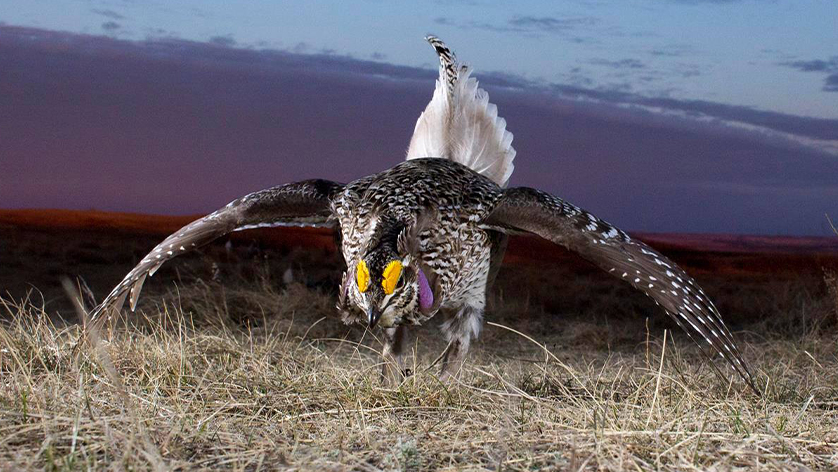Spring Romance on the Prairies – Mating Behaviour of the Sharp-tailed Grouse
Looking for some spring romance? Enjoy dancing? Are you intrigued by nature?
If you answered “yes”, you may want to head out into the cool, April pre-dawn in search of a lek. What is a lek, you ask? In prairie environments, a lek is a gathering area in grassland habitat where male sharp-tailed grouse (Tympanuchus phasianellus) perform elaborate courtship dances to impress and acquire mates.
“The dance of the sharp-tailed grouse is so unique. That’s why lek surveys are one of my favorites to conduct,” says Jeremi Skelton (photo top-right), an environmental specialist at EDI Environmental Dynamics Inc., with 20 years of experience as a wildlife biologist and videographer. When the male grouse dance, yellow eye cones become visible above their eyes and purple air sacks expand on their necks, giving them a very dramatic appearance. Their tails point straight up and can be seen from quite far away – distinct behavior that helps EDI staff locate leks during surveys.
“Leks often look like UFO crop circles. The birds can stomp the vegetation down until the surface almost looks like a moonscape,” explains Jeremi. The size of a lek varies according to the number of birds using it, which may be as few as six birds or as many as fifty. Males often outnumber the females by as many as eight to one.
Sharp-tailed grouse begin gathering at the lek as early as February or March, but the dancing won’t occur until April. Males arrive at the lek in the dark, before sunrise. Once the females arrive later in the morning, the dancing begins. The males will dance until about 10 am, stopping when the temperature warms up. When the dancing has concluded, the males sit down in the shade of a nearby shrub or tree to rest, while the females go to nest. The males will gather back at the lek in the evening.
Lek surveys are just one of many TERRESTRIAL SERVICES provided by EDI. When doing these surveys, we use a combination of digital imagery and site visits to confirm the presence of a lek. Leks are sensitive environmental features that grouse use repeatedly for many years. As a result, many jurisdictional governments have placed set-back distance restrictions on sharp-tailed grouse leks. It’s important to identify leks prior to construction of a project so they can be avoided. By doing lek surveys, we help our clients avoid these features, reducing regulatory and project risk, while supporting the continued function of key habitats.


